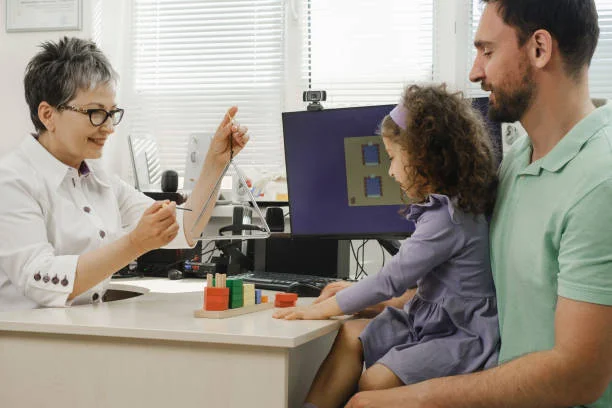When evaluating motor function in children with physical disabilities, particularly those with cerebral palsy (CP), it’s essential to have a reliable system to classify their abilities. The GMFCS — or Gross Motor Function Classification System — is a widely accepted tool used in pediatric assessments to categorize motor ability levels. By providing a standardized framework, the GMFCS helps healthcare professionals, families, and educators understand a child’s physical capabilities and guide care and therapy planning.
Understanding the GMFCS
The GMFCS was developed to classify the gross motor function of children with cerebral palsy. It assesses movements such as sitting, walking, and mobility in various environments. The system includes five levels, each describing a distinct range of motor function. The classification is based on what the child typically does in daily life, not what they are capable of doing at their best.
This system is age-specific, with different criteria for children under 2 years, 2–4 years, 4–6 years, 6–12 years, and 12–18 years. The focus is on self-initiated movement, and the GMFCS levels are designed to remain relatively stable over time.
Level I: Walks Without Limitations
Children at Level I of the GMFCS can walk and climb stairs without the use of a handrail. They are able to run and jump, although their speed, balance, and coordination might be slightly limited compared to typically developing peers. These children generally do not require any mobility aids and can navigate most environments independently.
This level indicates the highest degree of motor function and suggests that the child’s motor challenges are minimal. Interventions may focus on improving coordination and endurance.
Level II: Walks With Limitations
Level II children are able to walk without assistive devices but may face challenges in more complex environments, such as crowded spaces, uneven surfaces, or inclines. They may need a railing for stairs and are less capable of running and jumping.
In pediatric assessments, Level II on the GMFCS indicates that the child has functional mobility but benefits from some support or accommodations in more demanding physical situations. Therapy may emphasize strengthening and balance.
Level III: Walks Using a Hand-Held Mobility Device
Children at Level III require a mobility aid, such as crutches or a walker, to walk in most settings. They can often sit independently and may climb stairs with assistance. For longer distances or navigating unfamiliar environments, they might use a wheelchair.
This level of the GMFCS suggests moderate limitations in motor ability. Children can participate in many activities with help but are more dependent on equipment and accommodations. Pediatric professionals may recommend mobility training and adaptive technology.
Related insight: This article dives even deeper into the topic.
Level IV: Self-Mobility With Limitations; May Use Powered Mobility
Children classified as Level IV have more significant motor impairments. They may be able to move short distances using a walker or powered mobility device but typically require a wheelchair for longer distances. They often need support for maintaining trunk control and transferring positions.
In pediatric assessments, Level IV on the GMFCS signals substantial limitations in voluntary movement. Children may require help with most physical activities. Interventions focus on maximizing independence through technology and positioning aids.
Level V: Transported in a Manual Wheelchair
Level V represents the most severe motor limitations. Children at this level are unable to maintain head and trunk posture and have very limited voluntary movement. They are dependent on caregivers for all mobility and positioning and require a manual wheelchair.
This level on the GMFCS indicates profound physical challenges. Pediatric assessments help determine the best supportive technologies and caregiver strategies to ensure comfort, communication, and engagement in daily life.
How the GMFCS Helps in Pediatric Assessments
The GMFCS is essential in creating a clear and consistent understanding of a child’s motor function. It enables clinicians and therapists to:
- Develop individualized therapy goals
- Track developmental progress
- Compare outcomes across treatment types
- Set realistic expectations for families
- Coordinate support across care teams and educational settings
By classifying children based on functional ability rather than diagnosis alone, the GMFCS supports a more practical, strengths-based approach to care.
GMFCS in Multidisciplinary Contexts
In many pediatric settings, the GMFCS is used alongside other classification systems, such as:
- MACS (Manual Ability Classification System) for hand use
- CFCS (Communication Function Classification System) for communication skills
- EDACS (Eating and Drinking Ability Classification System) for feeding abilities
These systems complement the GMFCS and provide a holistic view of a child’s developmental needs, helping teams design more effective interventions.
Final Thoughts
The GMFCS plays a vital role in pediatric assessments of children with cerebral palsy and similar conditions. By classifying motor ability into five clear levels, it allows professionals to better understand, communicate, and respond to each child’s unique needs. Whether a child walks independently or requires full support for movement, the GMFCS provides a respectful, practical framework to guide support, intervention, and advocacy.
To explore all our latest posts in one place, be sure to visit the 2A Magazine.







